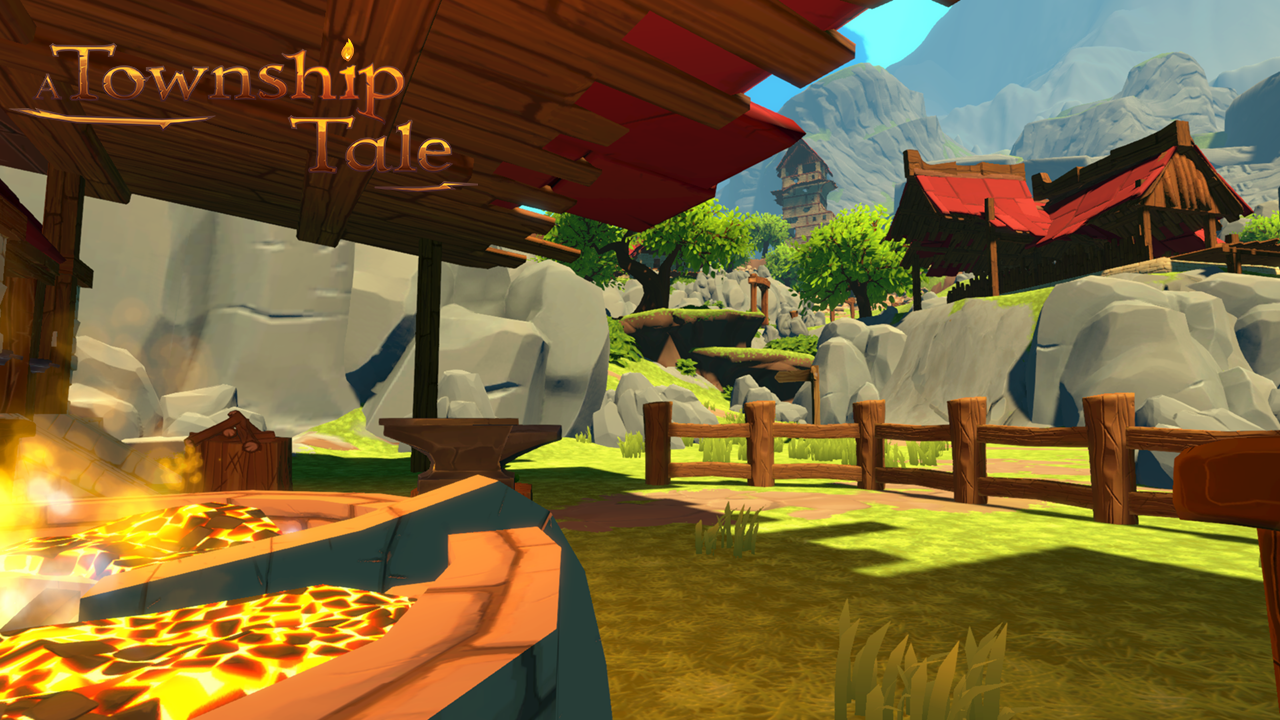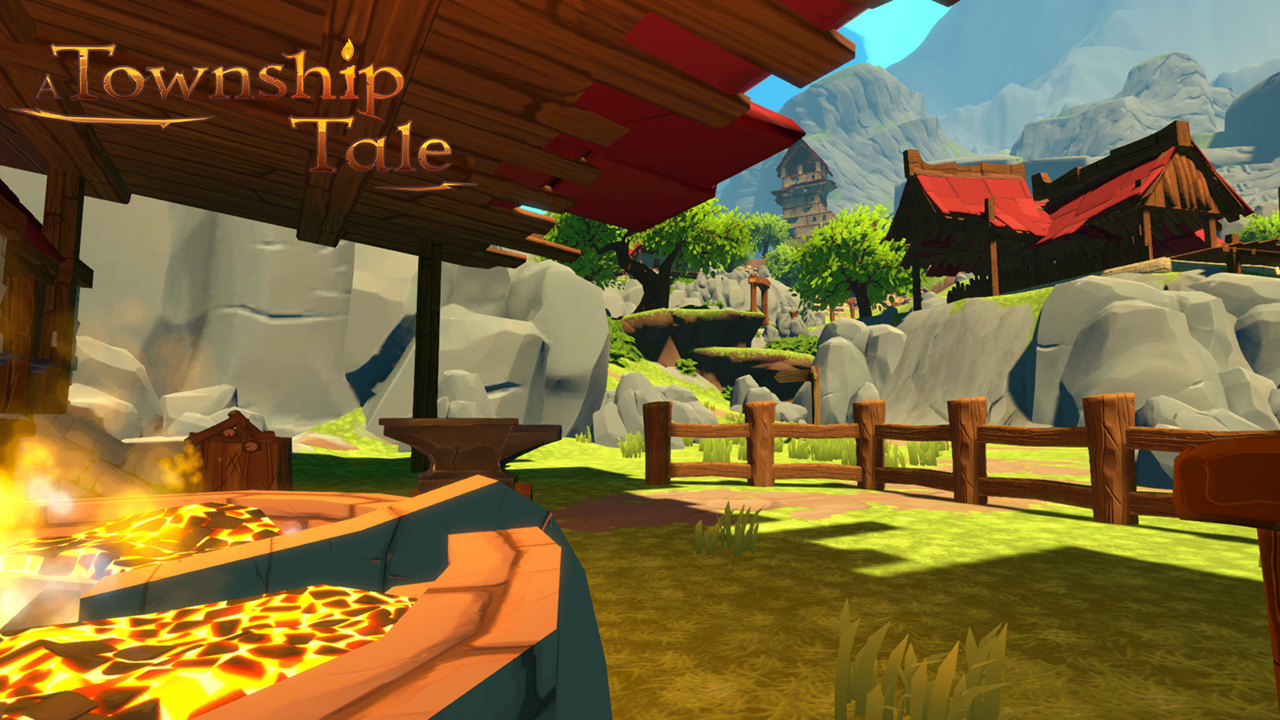Smelting, Forging & Crafting in VR
At long last I’m excited to share with you how Blacksmithing plays out as a role. It’s quite simple, really when you think about it, and we’ve spent time in the little details to make it a fun experience. To begin with you need ores. That’s quite simple, you get them from the Mines, or from someone who’s been down in the Mines, and collected them. They come in various rarities, each offering more effectiveness, and behaving differently throughout the forging process.
Upon entering the town, you’ll need to explore various houses to find out what they do. Some may offer a slight obstacle, as you need to break down vines to unveil doorways. The blacksmithing building can be found thanks to its massive ancient smelter sitting inside.
Smelting
This beast is used to process ores and ingots. You shove ores in one side, close the latch, fuel its mouth with coals and the moment the smelter begins its work, it’ll start chugging fumes. There are various indicators of how it does its work if you pay attention.
Ores get turned into ingots, and ingots give you a nice clean slab of metal to use as an ingredient to your tool or weapon of choice.

How you choose what you’re making from that is decided by moulds, these can be found as loot throughout the game. They become incredibly valuable, essentially allowing you to manufacture blades and tools based of various qualities depending on your materials.
Everything from dagger blades, to pickaxes, hammers,axes, pikes and sword blades, originate from these. They’ll tell you how many ingots you need, and once slotted into the smelter, will take any ingots you put in and begin smelting a raw version of your tool/weapon.

Forging
This is where the real fun of forging begins. If you are making a weapon, the smelter will spew out a dull, raw chunk of metal. Roughly in the shape of what you chose. On the way in, you may have noticed the massive forge near the entrance. These coals currently burn forever, but you’ll have to fuel it yourself in the final game. Placing the raw tool/weapon in there, you’ll notice it heating up and glowing orange. Once it reaches a good temperature, you can then place it over the anvil and go to town on it with a hammer (a stone also works if you’re short on tools).
To be good at forging, you actually have to strike different parts of the blade or axe head. You’ll notice the edges thinning out and spreading as you go, but a part you may have ignored will still be thick and chunky. It takes a bit of practice to remember which key parts of the weapon heads to hit, and you’ll have to learn how each new weapon head behaves. Different metals bend at different speeds, and have different max temperatures.

Once you’re done, you’ll see an effect play and more hits will not do anything to the blade anymore. That being said, it’s too early to start swinging at enemies or to be using it. This is where our weapon crafting comes into play.
Crafting
Crafting gives you a lot of freedom. In order to make unique weapons and tools, you need to actually find building parts around the world as loot. As we get more areas, you’ll have to visit specific locations for certain parts.
These parts are essentially handles, pommels and guards for your weapon. You can get long handles, wider guards, and sharper pommels to suit your different needs. Handles play the most important role, defining how many things you can attach to it and where.
To craft things, simply pick up both pieces and if they are compatible you’ll clearly know how to connect them together. You can have weapons of various sizes, that do different damage using different swings, and a variety of damage types.

As you can imagine, as we’re creating more content for the game, your options will increase dramatically with each new item we add. Take the dual-sided sword in the gif, for example. I have yet to see someone use this well, but I’m eager to be surprised. As a role, the various parts of it will see various levels of progression, but I’d be rambling on for too long if I kept going. Hope you enjoyed this, and join our Discord if you’re interested in speaking to us about the game!

